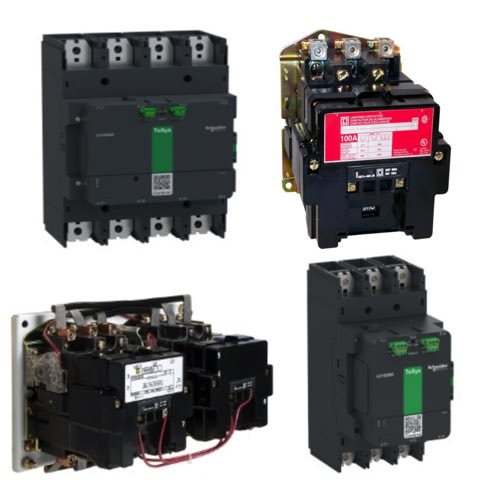Schneider Electric Starter Contactors

RSP Supply carries a full line of Schneider Electric starter contactors designed for dependable, efficient motor control and protection. Built for industrial and commercial use, these contactors deliver high performance, easy installation, and long mechanical life in demanding environments.
The Schneider Electric TeSys Deca series sets the standard for reliability, with up to 10 million mechanical operations and advanced coil technology that improves energy efficiency and response time. Available in both IEC and NEMA configurations, these contactors support a wide range of voltage ratings, installation styles, and control options.
Each unit features auxiliary contact options for flexible integration with automation systems, allowing for control logic, signaling, and safety interlocks. Many models also include built-in overload protection to safeguard motors from current surges and overheating.
FAQs
Q: What is the TeSys Deca series of Schneider Electric contactors known for?
The TeSys Deca series is known for its durability (up to 10 million operations), energy-efficient coil technology, and reliable motor control in industrial applications.
Q: Do Schneider Electric starter contactors include overload protection?
Yes, many models include built-in overload relays or can be paired with Schneider’s thermal relays for complete motor protection.
Q: Are both IEC and NEMA contactor options available?
Yes. Schneider Electric offers IEC and NEMA contactors to fit various application standards, power ratings, and installation requirements.
Q: Can auxiliary contacts be added to Schneider Electric contactors?
Absolutely. Auxiliary contacts allow control feedback, signaling, and safety interlock integration within your motor control circuits.
Q: Do Schneider Electric starter contactors come in non-reversing models?
Yes, Schneider Electric IEC contactors and motor starters are available in non-reversing configurations for efficient motor control and protection.
Why Buy Schneider Electric Starter Contactors from RSP Supply
At RSP Supply, we combine industry expertise with a vast inventory of Schneider Electric motor control solutions to keep your systems running safely and efficiently. Our in-stock contactors, competitive pricing, and same-day shipping mean less downtime and faster project completion.
Whether you’re upgrading to TeSys Deca contactors or sourcing replacements for existing systems, RSP Supply provides trusted brands, technical guidance, and unmatched customer service - making us your go-to partner for industrial automation components.

